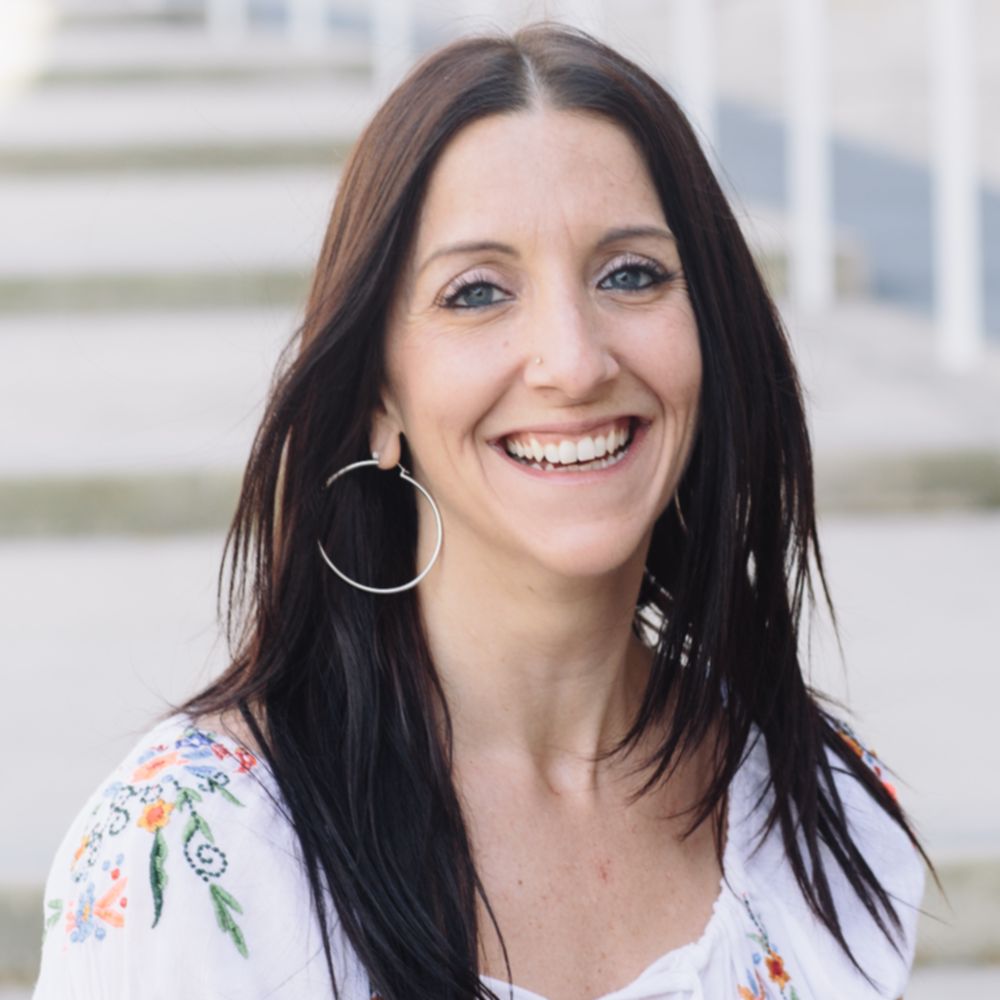Discovering these profound and nourishing words by Sharon Salzberg early in my spiritual journey has been a blessing. Within this brief and elegant statement, I find wisdom, comfort, reassurance, and direction. When encountered with uncertainty or hardship, I now regularly open myself to these words, relying on their power to dissolve barriers, illuminate space, and provide me with the strength to cultivate skillful action. Without barriers in the way, I can briefly experience oneness and see with a beginner’s mind.
“Love can go anywhere. Nothing can obstruct it.”
Sharon Salzberg, Lovingkindness: The Revolutionary Art of Happiness
Another quote I discovered on my spiritual journey from Nisargadatta Maharaj was not as easy for me to absorb: “Wisdom tells me I am nothing. Love tells me I am everything. Between the two, my life flows.” These words are unmistakably rich with significance; however, after several passes, I remained uncertain of their intended meaning and value and curious to learn more. Thanks to writing down and organizing my thoughts for this article, my understanding of both quotes and their relationship to one another began to develop in a more meaningful way. By examining these words from the perspectives of science, philosophy, and spirituality, I hope to expand our awareness of oneself, wholeness, and interconnectivity, and to also plant reminders on how to be exactly as we are.
Self
When inquiring into who and what we think we are, why might one consider identifying themselves as ‘nothing’ or ‘everything’? ‘Nothing’ or ‘nobody’ seems rather isolated and desolate, while ‘everything’ resembles an inflation of self. In either case, there is an association of labels with a being as if the being were a solid and permanent entity. Buddhists might say there can be no fixed sense of self in the first place due to change and impermanence, and hence nothing to ascribe a label. Self-inquiry and self-understanding are fundamental parts of living mindfully; however, assigning a label to a separate sense of self may overlook the mysterious and ever-changing nature of our being. I often find my own mind wandering about, crafting illusions of reality from memories and experiences, then leaving me in this constrained place with a bewildering sense of separation from life and not completely who I am. I do not want to feel separate or divided from the rest of the world, but instead be connected and return to who I really am in the fabric of all there is. With the intention of understanding these tendencies and working toward liberation from them, let’s explore the potentially unanswerable questions of who and what we think we are – and in the process, approach the goal of undivided living.
Selflessness
Buddhist teachings include the concept of anatta, a form of insubstantiality or selflessness. According to this teaching, there is no separate and enduring entity existing inside of us that collects our sensory information then forming and solidifying it as reality. Anatta describes self as an “illusion layered over the contingent parts of our existence.” By allowing our minds to give equal weight to thoughts and reality, we carry on to craft a perception of ourselves as separate and enduring entities. This mistaken duality is described in Buddhist teachings as a fundamental force behind suffering.
Other scientists and philosophers have also pondered the “contingent parts of our existence.” Around 460 BC, an ancient Greek pre-Socratic philosopher named Democritus devised his atomic theory of the universe. In this theory, all of space is composed of indivisible grains that he called “atoms.” These atoms have no qualities at all, apart from “some kind of shape.” They have no weight, color, taste, or subjective qualities of any kind. Modern quantum physicists now refer to these grains or “atoms” as quanta, the fundamental building blocks of everything we know in our universe, including space itself. This suggests that the composition of building blocks that make up everything we know (including the cells of the human body) are empty of any concept of selfhood. I find this subtle insight that any notion of separate self is nowhere to be found in the constituent parts of my being to be quite liberating and supportive of the spirit of connectivity! Einstein also reminds us that when we identify ourselves with a permanent, solid self, we neglect the perspective of wholeness and connectedness, and only see one side of being alive.
“The true value of a human being is determined primarily by the measure and sense in which he has attained liberation from self.”
Albert Einstein
When Nisargadatta’s wisdom tells him he is “nothing,” I would like to suggest this does not mean a desolate emptiness, rather, a being composed of interconnected constituent parts, absent of any inherent self-existence, boundaries, separateness, and/or fragmentation of awareness. “Nothing” can refer to a bundle of matter and energy within which wholeness and interconnectivity predominates, serving as fertile ground for cultivating an open heart, undivided awareness, and boundless, loving kindness. Who we are and what we are have never been separate from anything. We have always been everything, and love reminds us of this.
Dissolution of Self
Possessing a mind that can establish individuality and is also capable of maintaining a unique past and craft plans for the future is an emergent phenomenon of human evolution. Is it possible to learn the contents or constituent parts created by our consciousness so that we may better understand the subjective quality of our experiences? – And then, can we understand what our construct of self is made of?
Over 2,500 years ago, Buddha taught his students to develop a power of love so strong that the mind becomes like space that cannot be painted. Only walls or the barriers to space can be affected by paint. He also taught to develop a power of love so strong that the mind becomes like a pure, flowing river that cannot be burned. This wisdom has profound transformational power, recognizing oneness and the interconnectedness with the natural world. No mountain, planet, atom, or person exists in and of itself as a permanent entity, isolated and independent from everything else. All of our being is part of the flow of the universe. In Einstein’s view, we all come into and go out of this world as passing gatherings of structured energy like eddies in a river. In Sharon Salzburg’s words, “The critical moment of the path which breaks open the loving heart is the realization that we have never existed as separate, isolated beings.”
With much enthusiasm, I’m able to report that modern neuroscience also supports these spiritual philosophies. Not known to brain science until 2001, a particular region of the human brain playing a role in the creation of mental constructs or projections – the most important of which is the construct we call self – was identified and characterized. Neuroscientists now refer to this region of the brain as the default mode network (DMN), or the “me network.” A 2012 study in Proceedings of the National Academy of Sciences used functional magnetic resonance imaging (fMRI) to monitor brain activity associated with changes in blood flow exposed heightened brain activity in the DMN when subjects were doing nothing mentally (no demands for attention or mental tasks to perform). The researchers concluded the DMN is where the stream of consciousness flows, the place where our minds go to wander and assemble mental constructs, such as self and ego. These are functions believed to be exclusive to adult humans and, consequently, the DMN is not operational until late in a child’s development. Further experimentation with fMRI reveals a precipitous drop-off in blood flow to the DMN of experienced meditators and of subjects experiencing “dissolution of self and ego,” following supervised clinical treatment with psychedelic molecules such as psilocybin. As practitioners of mindful breathing and yoga, we have direct access to the transformative power of disentangling the mind’s preoccupation with self. Buddhist philosophers and yogis had arrived at this insight centuries ago!
“Stay away from anything that obscures the place it is in.”
Wendell Berry
Wholeness
Wisdom can guide us to freedom and away from the imprisoning delusion of self. Love can allow our hearts and minds to open to the richness of the present moment and recognize our inherent wholeness and interconnection with everything. Together (and somewhere in between) is where the magic happens, like the middle way of the Buddha, the interface between peanut butter and jelly, the mysterious oneness of our spirit and what binds us together. When we can reside in the domain of being without barriers, we can extend loving kindness to ourselves, simultaneously radiating loving kindness to the entire world. We can begin to see things as they really are, like young children experiencing life anew, innocent of expectation, fear, and convention. We can experience every moment of every day with a beginner’s mind, more faithful to reality. Understanding that limitations and barriers are not an enduring part of our being can help us let go of structures of self and also relearn our way back to who we already are and our place in the universe. Who we are is enough. Imagine a world with no boundaries, prejudice, sexism, unnecessary tension between self and other – this is the kind of world I would like to inhabit.
















